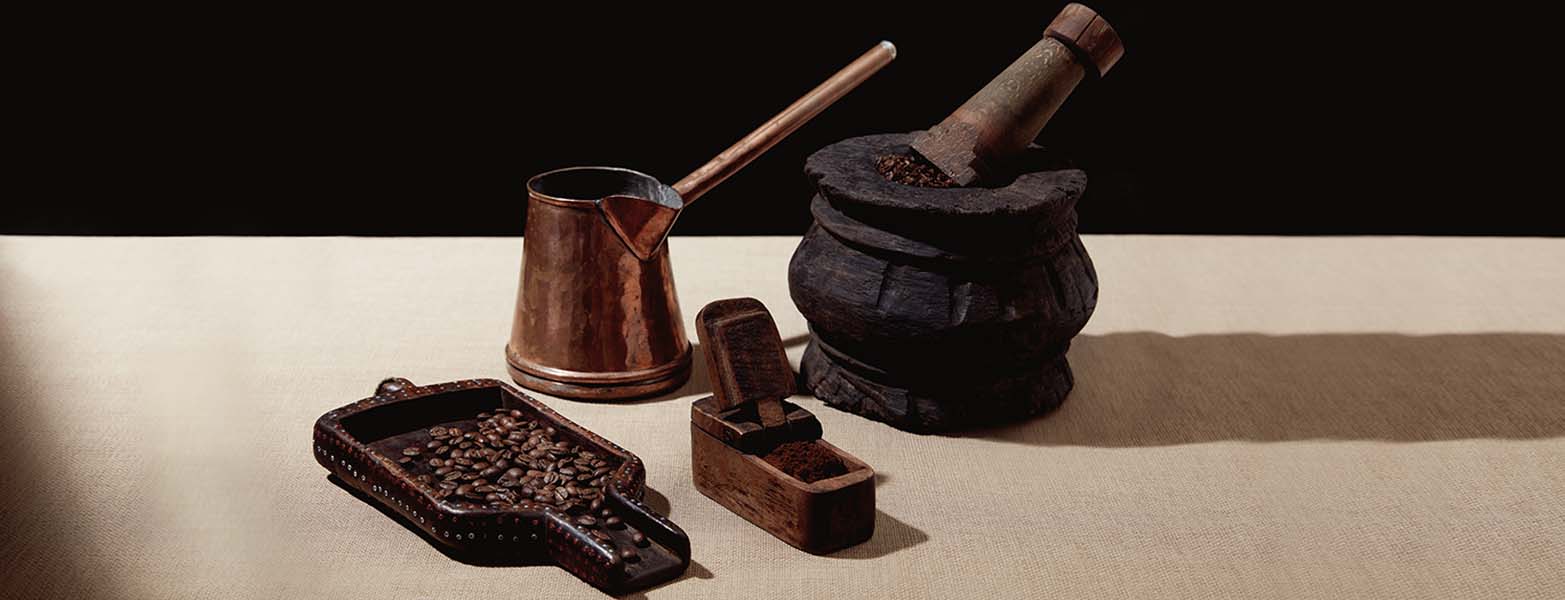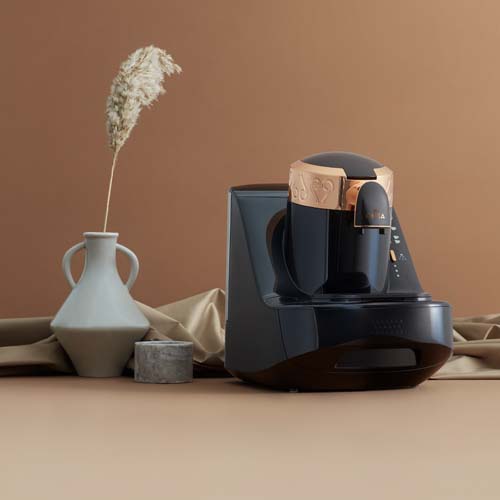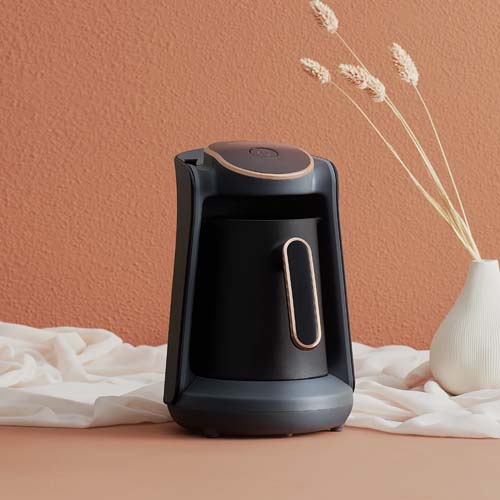In the 900s, the Galla Tribe in Ethiopia first discovered the stimulating effect of coffee beans. By the 1000s, Coffee was first made by boiling seeds from a plant brought to the Middle East by Arab traders, called “kahwa.” Coffee beans were roasted, ground, and formed into a ball with oil.
In the 1400s, in Yemen, a different recipe made again with coffee from coffee plants became widespread among the Sufis, and coffee began to be cultivated widely in the Arabian Peninsula.
The first commercially grown coffee plantation was found near the port of Al-Muha (Mocha) at the mouth of the Red Sea in Yemen. Coffee, which began to be widely consumed in Egypt, got to Syria in the 16th century.
In 1517, coffee was brought to Istanbul for the first time during the reign of Suleiman the Magnificent by the Governor of Yemen, Özdemir Pasha. The opening of the first coffeehouses occurred between 1551-1555.
The Ottoman Turks were first introduced to coffee in Yemen in 1536 and brought it to Istanbul, where it was carefully prepared by a staff of 40 people first served to the sultan in the magnificent halls of the palace.
Coffee, which won the sultan’s instant appreciation, became a favorite in the palace from that moment on. So much so that in the harem, concubines were given lessons on how to make coffee properly. Coffee left an indelible mark on the period’s social life, which can be seen in the rapid spread of coffeehouses through the empire at that time. Eventually, the customary preparation using a coffee pot named cezve over low heat took on the name “Turkish” coffee.
The actual preparation of coffee requires very detailed steps. First, freshly roasted coffee beans are ground in a mortar or grinder until powder. Next, coffee, cold water, optionally sugar are put in the coffee pot. The coffee is then placed on the stove and brewed until foam forms on the surface.
It is served with a glass of water and Turkish delight when it’s ready.
Achieving a good taste every time requires paying attention to particular points, such as the way and degree of roasting of the coffee.
Later on, the demand for coffee spread first to Europe and then to the world, reaching its reputation today as an important export commodity.
French traveler Jean de Thévenot, who visited the Ottoman Empire in the seventeenth century, became acquainted with coffee. After explaining the preparation method of this beverage, which is very similar to the current process, he describes how an essential element of life it was for the Ottomans: “Be it a rich or poor, every Turk drinks at least two cups of coffee a day.”
“Every husband is obliged to supply his wife with coffee.”
Edmondo de Amicis, an Italian traveler who visited Istanbul in the nineteenth century and lived there for a while, describes this passion with these words; “Coffee is everywhere, you can find coffee on top Galata or Beyazıt Towers, just as well you’d find it on the ferry, in the cemetery, government buildings even in the baths, just like you’d in a bazaar.”
No matter where one is in Istanbul, it is enough to shout “coffee!” and three minutes later, a piping hot coffee will be served, regardless of where you may be.
In the first half of the 17th century, coffee was still an exotic beverage. Like sugar, cocoa, and other scarce substances such as tea, the upper class was initially used as expensive medicinal drugs.
After the next 50 years, Europeans had discovered the social and medicinal benefits of this Arabian beverage. Coffee in the 1650s had made it to the Italian streets to be sold by aquaccdratajo or vendors who sold lemonade, chocolate, and liquor. Venice’s first cafe opened in 1683. Named after the beverage they served, the “caffe” (spelled as cafe elsewhere in Europe) soon became synonymous with fun friendships, cheerful conversations, and delicious food.

A Story That Extends From The Ottoman Empire To The World.

A Story That Extends From The Ottoman Empire To The World.
The Rise of Cafes
Coffee and cafes have started to gain momentum in London and Germany. In the 1700s, there were more than 2,000 cafes in London, with more space and rent than any other business.
Cafes were also known as 1-cent universities. This was because, for this small amount, one could buy a cup of coffee and have a place to enjoy extraordinary conversations for hours.
The first American cafe in the Americas opened in Boston in 1689. There was no apparent difference between a tavern and a cafe in the colonies. Beer, coffee, and tea were served together in Boston’s Green Dragon, a café-tavern from 1697 to 1832.
In 1714, the Netherlands gave the French government a healthy coffee plant. Nine years later, a passionate French naval officer named Gabriel Mathieu de Clieu brought coffee production to the French colony of Martinique. He took one of the plants produced from Dutch seeds from Paris’s Jardin des Plantes (Botanical Garden). He carefully looked after it during a perilous voyage across the Atlantic, which he later described as “the endless care I will have give to this delicate plant.”
After escaping capture by a pirate and surviving a storm, De Clieu’s ship struggled to navigate windless still waters for a month or so. The French officer shared what little water he had with the plant, protecting it from unsavory onlookers and helping it survive until its final destination.
When finally planted in Martinique, the coffee tree grew and flourished in its new home.
This single plant probably started most of the world’s coffee supply consumed today. The roots of famous French cafes begin in 1689, when an Italian immigrant, Francois Procope, opened the Cafe de Prope directly opposite the Comedie Franchise.
The “coffee” and “cafes” that came to Germany in the 1670s became widespread in many large German cities in 1721 and remained in the upper class for a long time.
In the 900s, the Galla Tribe in Ethiopia first discovered the stimulating effect of coffee beans. By the 1000s, Coffee was first made by boiling seeds from a plant brought to the Middle East by Arab traders, called “kahwa.” Coffee beans were roasted, ground, and formed into a ball with oil.
In the 1400s, in Yemen, a different recipe made again with coffee from coffee plants became widespread among the Sufis, and coffee began to be cultivated widely in the Arabian Peninsula.
The first commercially grown coffee plantation was found near the port of Al-Muha (Mocha) at the mouth of the Red Sea in Yemen. Coffee, which began to be widely consumed in Egypt, got to Syria in the 16th century.
In 1517, coffee was brought to Istanbul for the first time during the reign of Suleiman the Magnificent by the Governor of Yemen, Özdemir Pasha. The opening of the first coffeehouses occurred between 1551-1555.
The Ottoman Turks were first introduced to coffee in Yemen in 1536 and brought it to Istanbul, where it was carefully prepared by a staff of 40 people first served to the sultan in the magnificent halls of the palace.
Coffee, which won the sultan’s instant appreciation, became a favorite in the palace from that moment on. So much so that in the harem, concubines were given lessons on how to make coffee properly. Coffee left an indelible mark on the period’s social life, which can be seen in the rapid spread of coffeehouses through the empire at that time. Eventually, the customary preparation using a coffee pot named cezve over low heat took on the name “Turkish” coffee.
The actual preparation of coffee requires very detailed steps. First, freshly roasted coffee beans are ground in a mortar or grinder until powder. Next, coffee, cold water, optionally sugar are put in the coffee pot. The coffee is then placed on the stove and brewed until foam forms on the surface.
It is served with a glass of water and Turkish delight when it’s ready.
Achieving a good taste every time requires paying attention to particular points, such as the way and degree of roasting of the coffee.
Later on, the demand for coffee spread first to Europe and then to the world, reaching its reputation today as an important export commodity.
French traveler Jean de Thévenot, who visited the Ottoman Empire in the seventeenth century, became acquainted with coffee. After explaining the preparation method of this beverage, which is very similar to the current process, he describes how an essential element of life it was for the Ottomans: “Be it a rich or poor, every Turk drinks at least two cups of coffee a day.”
“Every husband is obliged to supply his wife with coffee.”
Edmondo de Amicis, an Italian traveler who visited Istanbul in the nineteenth century and lived there for a while, describes this passion with these words; “Coffee is everywhere, you can find coffee on top Galata or Beyazıt Towers, just as well you’d find it on the ferry, in the cemetery, government buildings even in the baths, just like you’d in a bazaar.”
No matter where one is in Istanbul, it is enough to shout “coffee!” and three minutes later, a piping hot coffee will be served, regardless of where you may be.
In the first half of the 17th century, coffee was still an exotic beverage. Like sugar, cocoa, and other scarce substances such as tea, the upper class was initially used as expensive medicinal drugs.
After the next 50 years, Europeans had discovered the social and medicinal benefits of this Arabian beverage. Coffee in the 1650s had made it to the Italian streets to be sold by aquaccdratajo or vendors who sold lemonade, chocolate, and liquor. Venice’s first cafe opened in 1683. Named after the beverage they served, the “caffe” (spelled as cafe elsewhere in Europe) soon became synonymous with fun friendships, cheerful conversations, and delicious food.
The Rise of Cafes
Coffee and cafes have started to gain momentum in London and Germany. In the 1700s, there were more than 2,000 cafes in London, with more space and rent than any other business.
Cafes were also known as 1-cent universities. This was because, for this small amount, one could buy a cup of coffee and have a place to enjoy extraordinary conversations for hours.
The first American cafe in the Americas opened in Boston in 1689. There was no apparent difference between a tavern and a cafe in the colonies. Beer, coffee, and tea were served together in Boston’s Green Dragon, a café-tavern from 1697 to 1832.
In 1714, the Netherlands gave the French government a healthy coffee plant. Nine years later, a passionate French naval officer named Gabriel Mathieu de Clieu brought coffee production to the French colony of Martinique. He took one of the plants produced from Dutch seeds from Paris’s Jardin des Plantes (Botanical Garden). He carefully looked after it during a perilous voyage across the Atlantic, which he later described as “the endless care I will have give to this delicate plant.”
After escaping capture by a pirate and surviving a storm, De Clieu’s ship struggled to navigate windless still waters for a month or so. The French officer shared what little water he had with the plant, protecting it from unsavory onlookers and helping it survive until its final destination.
When finally planted in Martinique, the coffee tree grew and flourished in its new home.
This single plant probably started most of the world’s coffee supply consumed today. The roots of famous French cafes begin in 1689, when an Italian immigrant, Francois Procope, opened the Cafe de Prope directly opposite the Comedie Franchise.
The “coffee” and “cafes” that came to Germany in the 1670s became widespread in many large German cities in 1721 and remained in the upper class for a long time.









